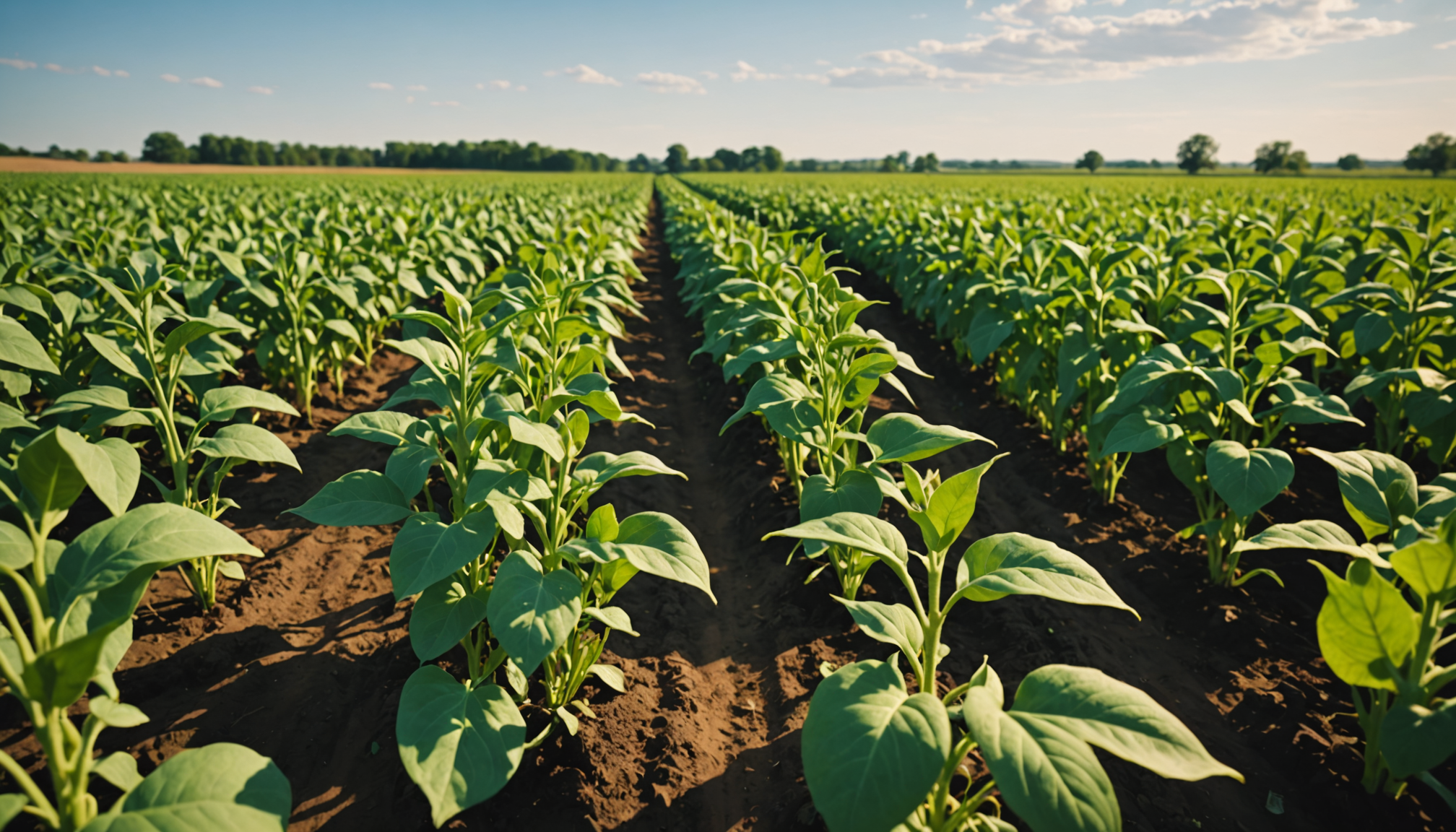
Report on Cowpea Breeding and Its Role in Sustainable Development Goals
Introduction
Cowpea is a vital staple crop contributing significantly to food security and agricultural sustainability worldwide. It serves multiple purposes including food, animal feed, and soil fertility enhancement. Predominantly cultivated in Africa, parts of Asia, and the Americas, cowpea is valued for its rich nutritional profile and climate resilience. This report emphasizes the alignment of cowpea breeding efforts with the Sustainable Development Goals (SDGs), particularly focusing on SDG 2 (Zero Hunger), SDG 12 (Responsible Consumption and Production), and SDG 13 (Climate Action).
Global Production and Regional Adaptability
The environmental adaptability and utility of cowpea vary widely across production regions due to diverse climates, soil types, and pest pressures. To address these regional challenges, breeding programs prioritize developing varieties with diverse plant types, growth habits, and maturity periods. This approach supports SDG 2 by enhancing food security through increased and stable yields.
Breeding Priorities and Genetic Diversity
- Enhancing Yield Productivity: Strategic breeding aims to improve crop productivity to meet the growing food demand.
- Environmental Resilience: Developing drought-tolerant and pest-resistant varieties aligns with SDG 13 by promoting climate resilience.
- Improving Nutritional Quality: Breeding efforts focus on enhancing the nutritional content of cowpea to support SDG 3 (Good Health and Well-being).
- Conserving Genetic Resources: Maintaining genetic diversity is crucial for sustainable breeding and long-term agricultural sustainability, supporting SDG 15 (Life on Land).
Challenges and Future Directions
- Addressing region-specific pest resistance and drought tolerance challenges.
- Enhancing nutritional quality to meet consumer preferences and health needs.
- Strengthening global germplasm conservation to ensure genetic diversity.
- Promoting collaborative research to accelerate breeding advancements.
Contribution to Sustainable Development Goals
- SDG 2 – Zero Hunger: Cowpea breeding enhances food security by increasing yield and nutritional value.
- SDG 12 – Responsible Consumption and Production: Sustainable breeding practices contribute to efficient resource use and reduced environmental impact.
- SDG 13 – Climate Action: Developing climate-resilient cowpea varieties supports adaptation to changing environmental conditions.
- SDG 15 – Life on Land: Conservation of genetic diversity ensures ecosystem health and sustainable agriculture.
Conclusion
Continued progress in cowpea breeding is essential to overcoming regional agricultural challenges and supporting global food security and sustainability. Integrating SDG principles into breeding programs will enhance the crop’s contribution to resilient agricultural systems and improved livelihoods worldwide.
1. Sustainable Development Goals (SDGs) Addressed or Connected
- SDG 2: Zero Hunger
- The article highlights cowpea as a staple crop promoting food security, addressing hunger and nutrition.
- SDG 12: Responsible Consumption and Production
- Focus on sustainable agricultural practices and soil fertility management through cowpea cultivation.
- SDG 13: Climate Action
- Cowpea’s climate resilience and breeding for drought tolerance relate to adaptation to climate change.
- SDG 15: Life on Land
- Genetic diversity conservation and sustainable land use through improved crop varieties.
2. Specific Targets Under Those SDGs Identified
- SDG 2: Zero Hunger
- Target 2.3: By 2030, double the agricultural productivity and incomes of small-scale food producers through sustainable food production systems.
- Target 2.4: Ensure sustainable food production systems and implement resilient agricultural practices.
- SDG 12: Responsible Consumption and Production
- Target 12.2: Achieve sustainable management and efficient use of natural resources.
- SDG 13: Climate Action
- Target 13.1: Strengthen resilience and adaptive capacity to climate-related hazards and natural disasters in all countries.
- SDG 15: Life on Land
- Target 15.1: Ensure the conservation, restoration and sustainable use of terrestrial and inland freshwater ecosystems and their services.
- Target 15.5: Take urgent and significant action to reduce the degradation of natural habitats and halt the loss of biodiversity.
3. Indicators Mentioned or Implied to Measure Progress
- SDG 2 Indicators
- Indicator 2.3.1: Volume of production per labor unit by classes of farming/pastoral/forestry enterprise size.
- Indicator 2.4.1: Proportion of agricultural area under productive and sustainable agriculture.
- SDG 12 Indicators
- Indicator 12.2.1: Material footprint, material footprint per capita, and material footprint per GDP.
- SDG 13 Indicators
- Indicator 13.1.1: Number of deaths, missing persons and directly affected persons attributed to disasters per 100,000 population.
- Indicator 13.1.2: Number of countries with national and local disaster risk reduction strategies.
- SDG 15 Indicators
- Indicator 15.1.1: Forest area as a proportion of total land area.
- Indicator 15.5.1: Red List Index.
- Implied Indicators from Article Content
- Genetic diversity indices to measure conservation of germplasm resources.
- Yield productivity metrics for cowpea varieties in different regions.
- Measures of pest resistance and drought tolerance in crop varieties.
- Nutritional quality assessments of cowpea varieties.
4. Table of SDGs, Targets, and Indicators
| SDGs | Targets | Indicators |
|---|---|---|
| SDG 2: Zero Hunger |
|
|
| SDG 12: Responsible Consumption and Production |
|
|
| SDG 13: Climate Action |
|
|
| SDG 15: Life on Land |
|
|
Source: frontiersin.org







